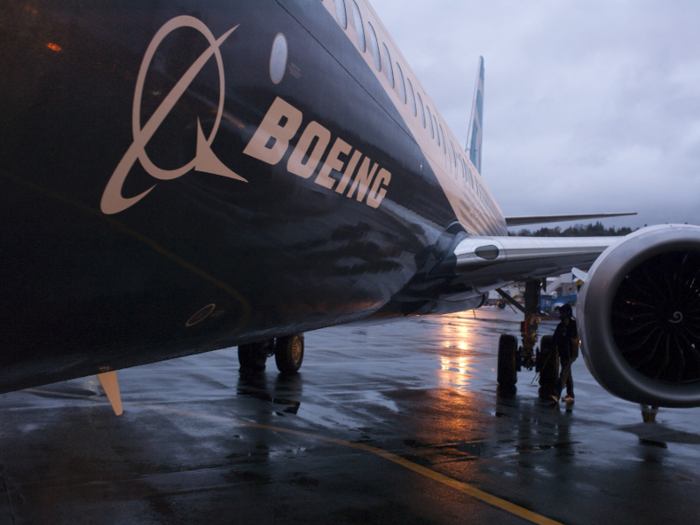
Each crash involved Boeing's 737 Max 8 aircraft, which went into service in 2017. Pilots recorded at least nine complaints about the aircraft in the Federal Aviation Administration's incident database in the months before the second crash.

The Lion Air flight crashed 13 minutes after takeoff, while the Ethiopian Airlines flight crashed six minutes after takeoff. Both flights displayed erratic flight patterns before they crashed, The New York Times reported.

Investigators are looking into the possible role played in each crash by the 737 Max's Maneuvering Characteristics Augmentation System (MCAS), which points an aircraft's nose downward if the plane is flying at too steep an incline.
Boeing installed the system on 737 Max aircraft because they feature larger engines that had to be mounted in a different way than those on prior 737 aircraft. The new engines created a tendency for 737 Max aircraft to tilt upward, which makes it more likely that they will stall in mid-air. The MCAS was designed to counter this tendency.
Evidence from both incidents indicates that the pilots on each flight struggled against the MCAS before their planes crashed, and speculation from observers has suggested that the sensor that causes the MCAS to point the plane downward may have activated in each case due to an error.

Investigators have found pieces of stabilizers from both flights in unusual positions, Reuters reported. The stabilizer piece found in the Ethiopian Airlines wreckage indicated that the plane had been set to fly downward, according to Bloomberg.

After the Lion Air crash in October, Boeing said it would update the software for its 737 Max fleet by the end of 2018, but failed to meet that deadline, The New York Times reported. Two days after the Ethiopian Airlines crash, Boeing said the update would arrive in the following weeks.
 I spent 2 weeks in India. A highlight was visiting a small mountain town so beautiful it didn't seem real.
I spent 2 weeks in India. A highlight was visiting a small mountain town so beautiful it didn't seem real.  I quit McKinsey after 1.5 years. I was making over $200k but my mental health was shattered.
I quit McKinsey after 1.5 years. I was making over $200k but my mental health was shattered. Some Tesla factory workers realized they were laid off when security scanned their badges and sent them back on shuttles, sources say
Some Tesla factory workers realized they were laid off when security scanned their badges and sent them back on shuttles, sources say Essential tips for effortlessly renewing your bike insurance policy in 2024
Essential tips for effortlessly renewing your bike insurance policy in 2024
 Indian Railways to break record with 9,111 trips to meet travel demand this summer, nearly 3,000 more than in 2023
Indian Railways to break record with 9,111 trips to meet travel demand this summer, nearly 3,000 more than in 2023
 India's exports to China, UAE, Russia, Singapore rose in 2023-24
India's exports to China, UAE, Russia, Singapore rose in 2023-24

Copyright © 2024. Times Internet Limited. All rights reserved.For reprint rights. Times Syndication Service.